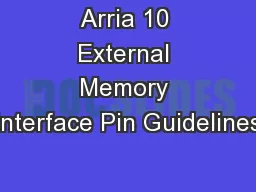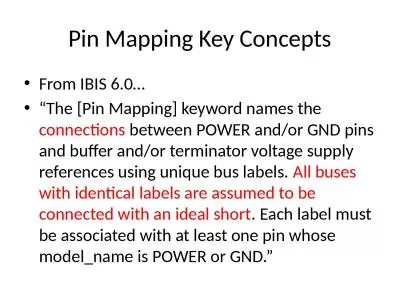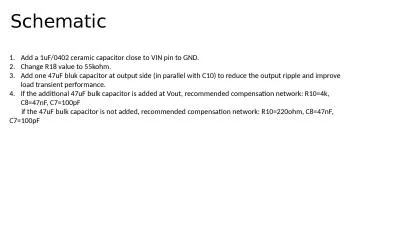PPT-Arria 10 External Memory Interface Pin Guidelines
Author : alida-meadow | Published Date : 2019-11-20
Arria 10 External Memory Interface Pin Guidelines Quartus Prime Software v170 2 Introduction Intels EMIF IP has many restrictions when it comes to pin placement
Presentation Embed Code
Download Presentation
Download Presentation The PPT/PDF document "Arria 10 External Memory Interface Pin G..." is the property of its rightful owner. Permission is granted to download and print the materials on this website for personal, non-commercial use only, and to display it on your personal computer provided you do not modify the materials and that you retain all copyright notices contained in the materials. By downloading content from our website, you accept the terms of this agreement.
Arria 10 External Memory Interface Pin Guidelines: Transcript
Download Rules Of Document
"Arria 10 External Memory Interface Pin Guidelines"The content belongs to its owner. You may download and print it for personal use, without modification, and keep all copyright notices. By downloading, you agree to these terms.
Related Documents




![[Pin Pad Map] Proposal](https://thumbs.docslides.com/545371/pin-pad-map-proposal.jpg)









